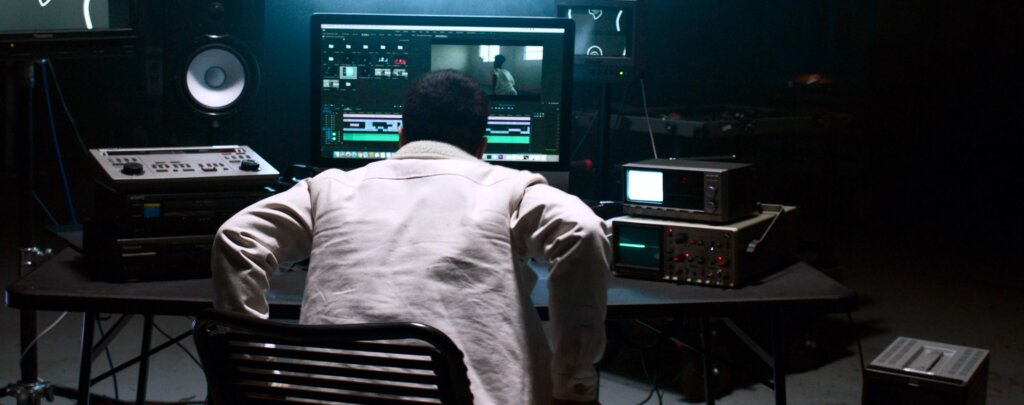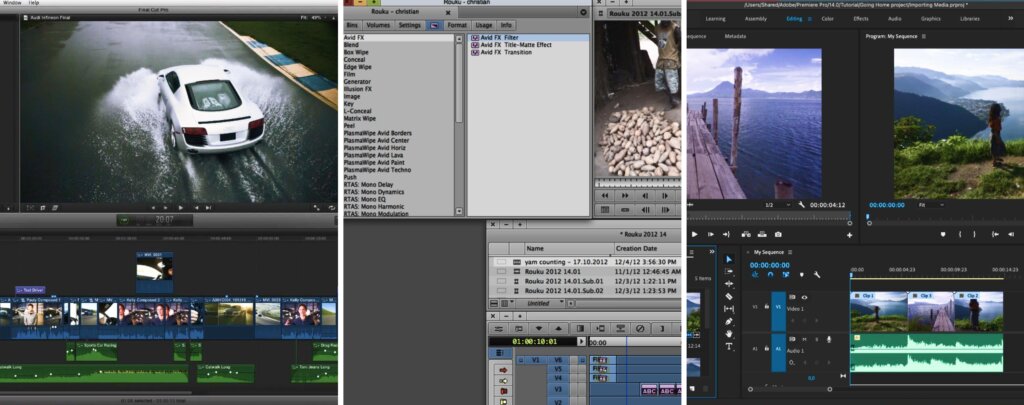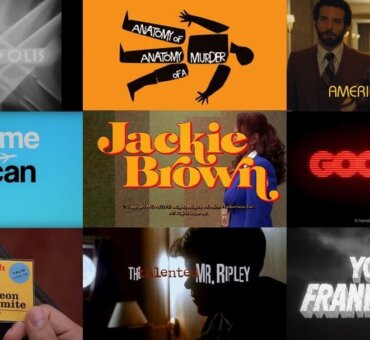Post-production supervisors are the people who manage everything once the filming has been completed and take the project all the way until it is ready for distribution. But what makes a great post supe? In this article, we are going to share the difference between a “good” and “great post supe” from the people who know best—the actual post-production supervisors themselves.
Setting the Stage: the Essential Role of Post-Production
The role of the post-production supervisor is essential since it demands bringing together the director’s vision, coordinating all of the different departments, and getting the film ready for its release. These may include streaming services, television, film festivals, or big-screen cinema releases, and each may have different technical specifications.
The post supe is considered the backbone of the production process, and it is their responsibility to coordinate all aspects of post-production, including sound, color, special effects, and more.

Essential skills for post-supervisors
Since they are overseeing a process that can involve a lot of people, effective communication and collaboration are musts. There will often be tight deadlines, which means that the post supe should be calm under pressure. Organization is essential, and project management will be a key part of the process. They also need to communicate well between creative teams and technical teams.
Coordination and collaboration are at the heart of the process, and many projects will have non-artistic stakeholders. A great example of this would be a commercial where there is the director and the client. The director may have a fabulous artistic vision for showcasing a product, but ultimately the client company is going to have the final say. The post-production supervisor may have to bridge the gap between the two, and great communication skills are essential.
The art of guiding the edit
There is an art of guiding the technical aspects of production. The first phase of the edit is assembling the footage into an assemblage, or rough cut. The story has to be compelling, and meticulously put together. It is the post supe’s role to have a keen eye for detail, understand storytelling, and have the technical expertise to oversee the process.
The editors are doing the hands-on work, but the post-production supervisor has to work with them closely, to give feedback and ensure that the cut is in line with the director’s vision. This is going to include reviewing edits, suggesting changes, and making decisions as needed. It can be a complicated process, ensuring that the story flows smoothly, the pacing is correct, and the narrative remains engaging.
The director’s lens
In some ways, the post-production supervisor is the director’s eyes on the ground and has to ensure that the original vision stays true in the final product. This means continually keeping a lookout for the director’s creative vision, and guiding the team accordingly. They might suggest alterations to the sequence of scenes, changes in the audio, or adjusting visual effects to enhance the viewing experience.
The Symphony of Sound
Sound is beyond essential when it comes to film, and this is something that amateur filmmakers overlook. While fixing color and visual challenges is relatively easier, sound is a key part of the viewing experience. There are a lot of elements to this, including creating sound effects, mixing dialog, integrating music to enhance the mood, and choosing how the audio landscape will impact the audience’s enjoyment of the film.

The sonic landscape
The post supe will collaborate closely with sound designers and foley artists, providing guidance as they create sound effects and mix soundtracks that will align with the narrative and aesthetic of the film. This includes harmonizing the elements of sound effects, dialog, and music so that it aligns with the project’s vision.
The final mix is the last step of the sound design process. The post-production supervisor will check this against different quality standards needed for different destinations. Recent films like Top Gun: Maverick, Avatar: The Way of Water, and Creed III were all presented in deluxe IMAX cinemas, but the immersive sound mix for movie theaters will have different requirements for when the films eventually get shown on a streaming platform like Amazon, Netflix or Youtube.
Painting With Light: Collaboration With Colorists
Color grading plays an essential role in establishing the visual tone of the film, whether it is the dark, brooding colors of a film noir or the bright, saturated colors of a rom-com. We subconsciously respond to a color palette, much like in real life. A dark winter’s night in Detroit will provoke a different response to a bright sunny day in Los Angeles. The best example of the latter is the opening sequence to La La Land, with the song “Another Day of Sun,” which is replete with bright pastel colors, and the blue skies of Southern California (albeit set above the sprawling LA freeway).
Once again, the color is crucial to complementing a director’s vision, and a bad choice can spoil the feeling of the film. This has tremendous subtleties, including color balance, saturation, brightness, and contrast. Different scenes have to be presented in a way that is consistent, and part of the art of color grading is creating a cohesive feeling across the film. The post-production supervisor is central to overseeing this process and coordinating as needed with VFX teams, animation teams, and even the VR department when relevant.
Project Management Tools
Different post-production supervisors will have different choices of project management software, and the production company, studio, or the post supe themselves may dictate this. StudioBinder is a go-to choice for many professionals, specifically because it is a cloud-based management tool that is specifically designed for film production.
The Balancing act: Time and Money
Managing the post-production budget is a critical responsibility of the post-production supervisor. They have to ensure that all post-production activities stay within the allocated budget, and as with any business, this will include negotiating rates and making tough decisions. At the same time, everything has to stay on schedule, and there is a vast array of moving parts within the process, from scheduling sound studios for audio dubbing and ADR (additional dialog recording) to renting equipment and ensuring that everyone gets paid if things go over budget.
What happens if it all goes wrong?
In the worst-case scenario, a film could never get finished and “die” in post-production. In an even worse scenario, post-production could go so over budget that the production company itself has to close. But let’s hear from some editors and post-production supervisors, and hear what they have to say.
What Makes a Great Post-Supe?
Joe Torino is a post-production supervisor from Gnarly Bay, a production company based in Rhode Island. He said that “it really helps if a post-supe has a strong and well-rounded understanding of post-production and the process. While that may seem obvious, it is not uncommon for producers with minimal post experience to be placed in post-supervisory roles, which can pose challenges for everyone involved”.
When we surveyed post-production professionals, there were four main categories of skill sets that they mentioned:
- Leadership
- Experience
- Organization
- Communication
Here is what some other post-supes and editors had to say about the process:
What makes a great leader?
“A good post-supe is a firewall between the editors and the producers, clients, network, etc. They need to walk the fine line of making sure that client requests don’t steamroll over post-production, but also know when to push post a little bit in order to keep the client happy.”
“One of the best post-supes I’ve ever had always did a good job of reminding everyone that we are on the same team (post, production, network, clients, legal, etc.,). We all have different roles and sometimes toes get stepped on, but we aren’t adversaries, and we shouldn’t treat one another as such.”
“A good post-supe is also organized and trusts the people under them to do their jobs. They don’t pretend to know everything, but they do know who to contact in order to find out the information they are looking for.”
“The best post-supes (in my opinion) don’t take the attitude that the editorial department works for them; but rather, they take the attitude that their job is to keep the producers and client off our backs.”
“[They have] the vision to see a project through from wherever you engage with it until it’s out of your hand. It’s like being the helmsman of a ship; don’t crash on the rocks and get to port safely.”
“Some post-supes act like your boss. Good ones act like a team organizer, and supporter.”
“The post-production supervisor is the captain of the ship. They anticipate problems BEFORE they happen, and flag things early. (Usually this means they have been editors or AEs before so they have a deep technical background).”
“[The bad ones] are what I like to call, the “copy and paste” supervisor. They basically just relay messages from one person to the next. They’re essentially a very expensive messenger owl.”
Experience
“A great post-supervisor should be able to bridge the gap between production and post, whether it’s in scheduling the edit, or anticipating technical needs. It’s good to have tech knowledge—even if you can’t do it yourself, you should intimately know what it takes to perform the needed steps in the different post processes to make yourself a better scheduler and diplomat between departments. And a good post-supervisor should equally be an ambassador and spokesperson for the project as the director or producer would.”
“At Best: They have AE level knowledge and experience. Can be effective managers and team leaders. At Worst: Hey can you send an email to this person for me?”
“Not being too much of a pest when checking on the status of the edit/export/delivery etc.. Listen, we know it’s your job, but please try to read the room and don’t “check in” too frequently, or when we’re clearly stressed and we’re already pushing hard to meet that deadline.”
Organization
“Organization, splitting up AE duties into different levels for a streamlined post workflow and maximum efficiency, prioritizes scheduling 8 hour work days without relying on overtime to get the job done, providing all training needed for the job and creating a pipeline for advancement, fostering an environment that encouraged work-life balance and fair pay, promotes diversity and inclusion. I love my post-supe! She was a former AE, and I haven’t worked more than 8 hours a day in a year. I never want to look for another job again!”
Communication
And finally, there was a short checklist from Joe Torino, gleaned from his many years of post-production experience. He wrote of the importance that “everyone involved in the post process (producers, directors, clients, editors, etc.) feels informed and has what they need to succeed. We don’t want people having unanswered questions.
For example:
- Producers are informed and can easily track progress on their own time so they can jump in as needed.
- Directors are engaged, feel heard, and know what they’re responsible for and when.
- The client’s needs are being anticipated. They aren’t looking for information; they’re being fed information. They understand the process, know the schedule, and feel informed throughout every phase.
- Editors/VFX artists/sound designers, etc., are briefed, have all the assets they need, and are in sync with the director. They need to know the key milestones and then be left alone to work as much as possible. Harassing editors and constantly looking over their shoulders doesn’t help. They need space.”
Torino concluded by saying that “Things can go wrong when it comes to the post-production process. In today’s media ecosystem, there are a lot of deliverables and standards, so quality control is critical. Some errors inevitably slip through the cracks. It’s essential to communicate when mistakes happen while working towards a resolution.”
A post-production supervisor can make or break a project, so choosing the right one is essential. And if they heed the advice of these industry professionals, they can become better than ever before.






